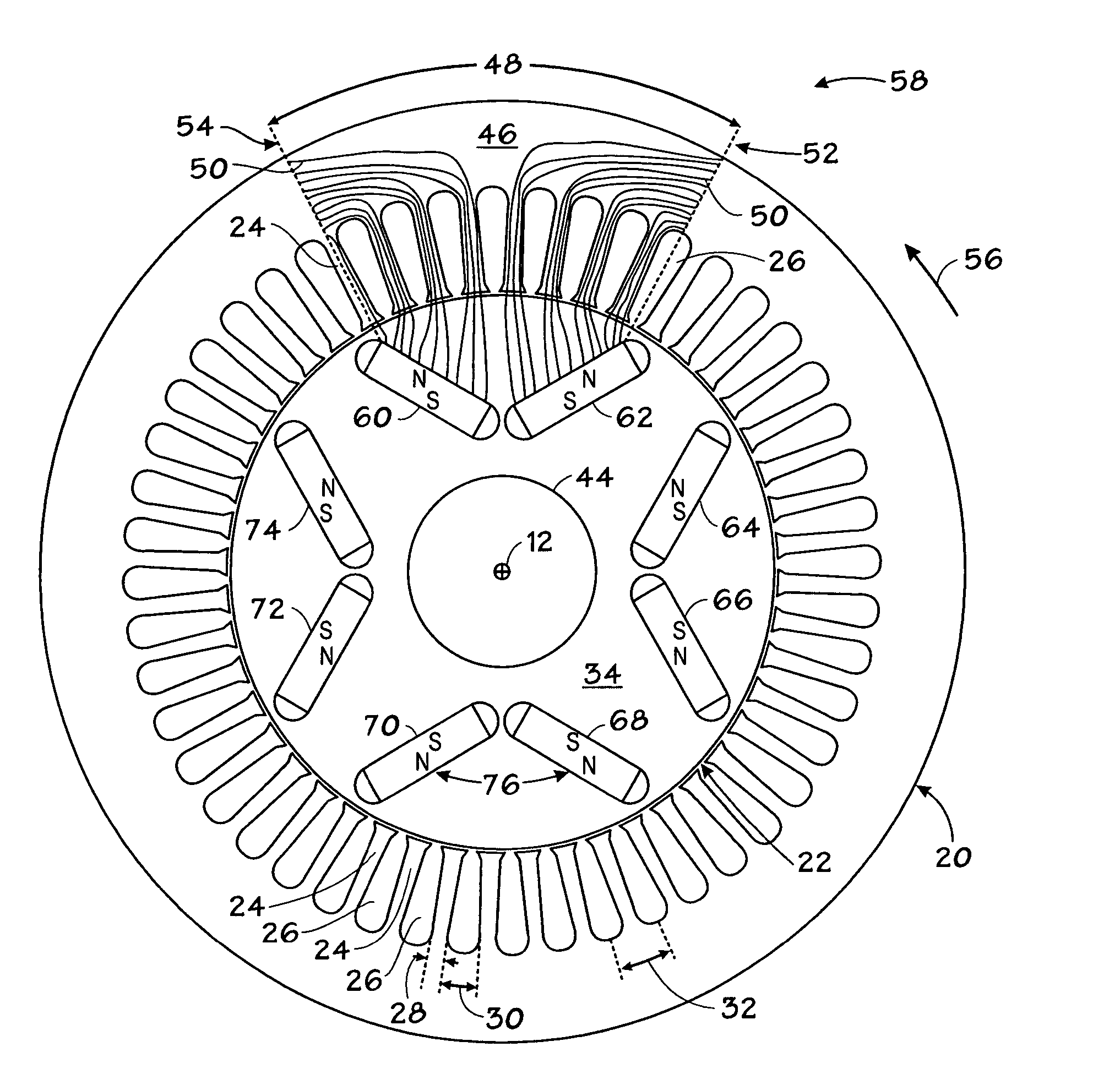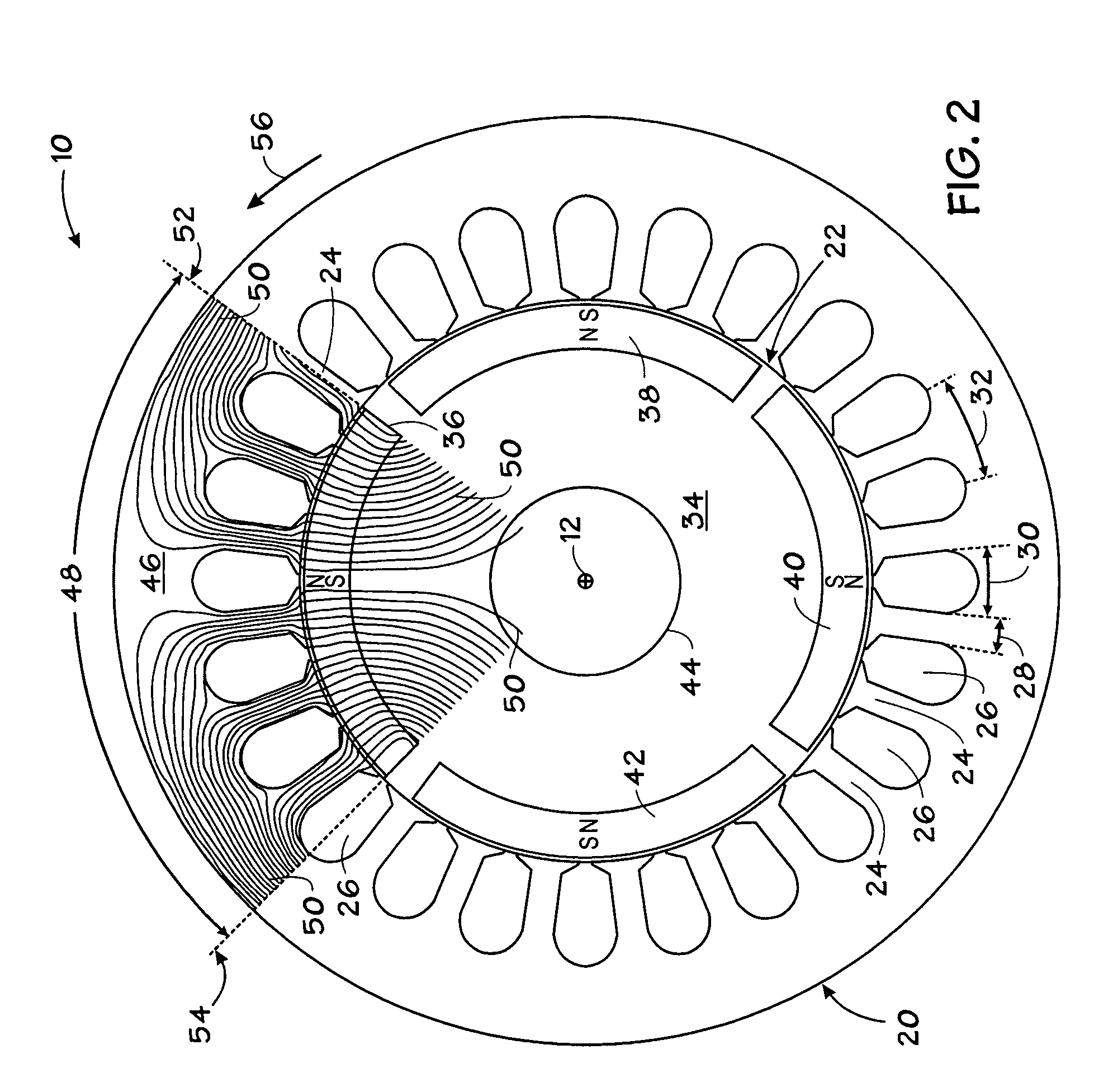Cogging reduction in permanent magnet machines
a permanent magnet machine and cogging technology, applied in the field of electric machines, can solve the problems of reducing the efficiency of the motor, affecting the drive load, adding maintenance costs to the motor, bearings and related equipment, etc., and achieve the effect of reducing the cogging torqu
- Summary
- Abstract
- Description
- Claims
- Application Information
AI Technical Summary
Benefits of technology
Problems solved by technology
Method used
Image
Examples
Embodiment Construction
[0015]FIG. 1 illustrates an exemplary system that includes a motor 10 having an axis of rotation 12, a power source 14, a shaft 16, and a load 18. As explained further below, the motor 10 may generate minimal cogging torque. In subsequently discussed embodiments, the motor 10 includes a rotor with magnetic poles that are spatially desynchronized with teeth in a stator. To this end, in certain embodiments, the magnetic poles may have an angular width that is not an integer multiple of the pitch of the teeth. As the rotor rotates, when the leading edge of a magnetic pole is aligned with a tooth, the trailing edge of the magnetic pole is between teeth, and vise versa. Advantageously, some of these embodiments may mitigate the previously discussed cogging effect. It is believed that staggering the time at which the leading and trailing edges of a pole are aligned with stator teeth reduces the torque applied to the rotor as it rotates between teeth, as is explained in greater detail belo...
PUM
 Login to View More
Login to View More Abstract
Description
Claims
Application Information
 Login to View More
Login to View More - R&D
- Intellectual Property
- Life Sciences
- Materials
- Tech Scout
- Unparalleled Data Quality
- Higher Quality Content
- 60% Fewer Hallucinations
Browse by: Latest US Patents, China's latest patents, Technical Efficacy Thesaurus, Application Domain, Technology Topic, Popular Technical Reports.
© 2025 PatSnap. All rights reserved.Legal|Privacy policy|Modern Slavery Act Transparency Statement|Sitemap|About US| Contact US: help@patsnap.com



